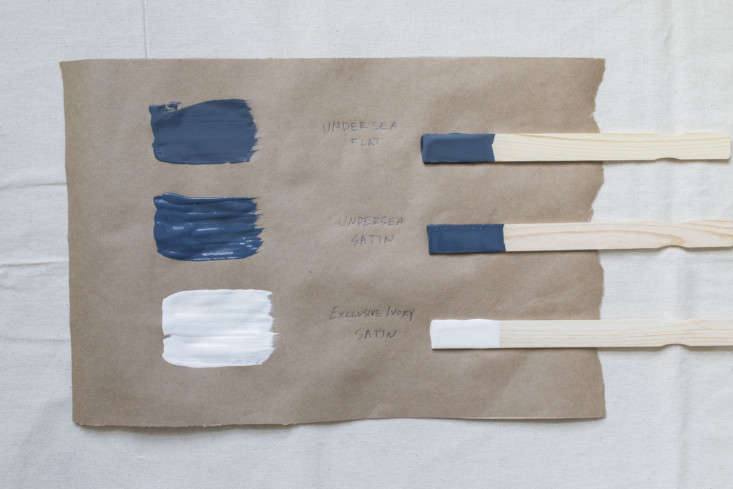A few months ago, over on Remodelista, the editors praised the power of paint for its ability to instantly reframe an interior space without committing to a full remodel. To prove their point, architectural and interior designer Katie Hackworth weighed in with three no-fail color palettes for a room’s ceiling, walls, and trim (see her picks here). It got us thinking: Could a fresh coat of paint provide an instant curb appeal upgrade as well? We went back to Katie to ask her advice and she responded right away with a resounding “yes!” and a few of her favorite exterior color combinations for your facade, exterior trim, and front door.
Photography by Mel Walbridge for Gardenista. Produced and styled by Oliver Agger.

Classic White

For a classic, can’t-go-wrong white palette, Katie leans toward whites that have some warmth, without reading yellow or pink. “Lately I’ve been gravitating toward painting the main house and the trim the same color but with different sheens,” she says. “Whether your home is traditionally detailed or more pared down, it’s a timeless way to modernize the overall look.”

Dark & Moody

For a dose of drama that still reads classic, Katie designed a palette anchored by a navy blue main house color. “Navy just might be my all-time favorite color,” she says. “These days, I’m seeing it more and more frequently on the exteriors of homes.”

Going Green

For a nonwhite palette, Katie chose a muted gray-green (the new neutral, if you ask us), accented by a putty tone for the exterior trim. “Putty is the cool, classic term for beige in my book,” Katie admits. “It sounds so much better, don’t you think?”

Katie’s no-fail palettes are all fairly neutral—classic combinations that don’t call attention to themselves. If you’re up for making a statement, stay tuned in the next few weeks for her favorite bold front-door colors.









